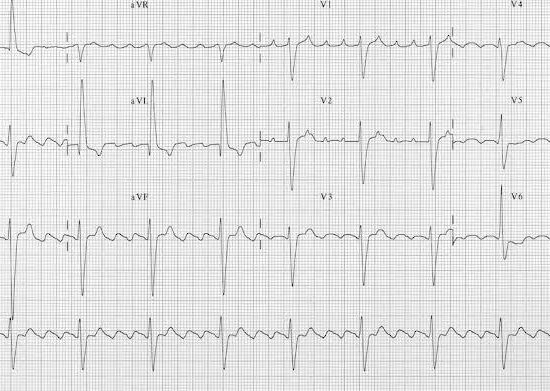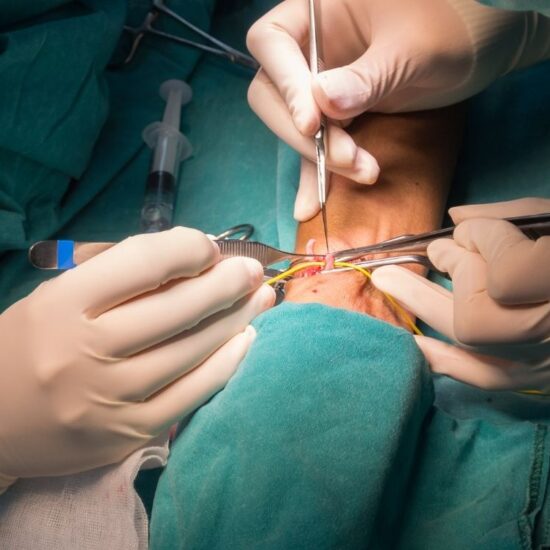Atrial Septal Defect (ASD)
Atrial septal defect (ASD) is a congenital heart condition. People with ASD have a hole between their upper heart chambers. This hole increases the amount of blood flowing to the lungs.
Small atrial septal defects may be discovered incidentally and never cause concern, while others may close in infancy or early childhood.
A large, long-standing atrial septal defect can damage the heart and lungs. Surgery may be necessary to repair the atrial septal defect and prevent complications.
Types
Types of atrial septal defects (ASDs) include:
Second: This is the most common type of ASD. It occurs in the middle of the wall between the upper heart chambers. This wall is called the atrial septum.
First: This type of ASD affects the lower part of the wall between the upper heart chambers. It can also occur along with other heart problems present at birth.
Sinus venosus:This is a rare type of ASD. It most often occurs in the upper part of the wall between the heart chambers. It often occurs in conjunction with other heart structural abnormalities present at birth.
Coronary sinus:The coronary sinus is part of the heart’s venous system. In this rare type of ASD, part of the wall between the coronary sinus and the upper left heart chamber is missing.
Symptoms
A baby born with an atrial septal defect (ASD) may not have any symptoms. Symptoms may begin in adulthood.
Symptoms of atrial septal defect may include:
- Shortness of breath, especially during exercise.
- Fatigue, especially with activity.
- Swelling in the legs, feet, or abdomen.
- Irregular heartbeats are also called arrhythmias.
- A feeling of skipped heartbeats or rapid, pounding or fluttering heartbeat, called palpitations.
When should I see a doctor?
Serious congenital heart defects are often diagnosed before or soon after a child is born.
If your child has difficulty breathing, seek emergency help immediately.
Call a healthcare professional if the following symptoms occur:
- Shortness of breath, especially during exercise or activity.
- Gets tired easily, especially after activity.
- Swelling in the legs, feet, or abdomen.
- A feeling of skipped heartbeats or rapid, pounding heartbeat.
Reasons
The exact cause of an atrial septal defect is unknown. The problem affects the structure of the heart and occurs during pregnancy as the baby’s heart develops.
The following may play a role in the development of congenital heart defects (such as atrial septal defect):
- Changes in genes.
- Certain medical conditions.
- Some medications.
- Smoke.
- Alcohol abuse.
How does the heart work?
To understand the cause of an atrial septal defect, it can be helpful to know how the heart typically functions.
A typical heart has four chambers: the upper two chambers are called atria, and the lower two chambers are called ventricles.
The right side of the heart carries blood to the lungs. In the lungs, the blood picks up oxygen and returns it to the left side of the heart. The left side of the heart then pumps blood through the body’s main artery, the aorta. The blood then travels to the rest of the body.
A large atrial septal defect can send too much blood to the lungs, causing the right side of the heart to overwork. If left untreated, the right side of the heart will enlarge and weaken over time. Blood pressure in the arteries in the lungs can also increase, causing pulmonary hypertension.
Risk factors
Atrial septal defect (ASD) occurs during pregnancy while a baby’s heart is forming. It is a congenital heart defect. Factors that may increase a baby’s risk of having an atrial septal defect or other heart problems at birth include:
- Rubella, also known as German measles, in the first months of pregnancy.
- Diabetes.
- Lupus.
- Use of alcohol or tobacco during pregnancy.
- Cocaine use during pregnancy.
- Use of certain medications during pregnancy, including those used to treat seizures and mood disorders.
Some congenital heart defects run in families. This means they are inherited. If you or someone in your family has a heart condition present at birth, let your care team know. Screening by a genetic counselor can help determine the risk of certain heart defects in future children.
Complications
A small atrial septal defect may never cause concern. Small atrial septal defects usually close in infancy.
Larger atrial septal defects can cause serious complications, including:
- Right-sided heart failure.
- Irregular heartbeats are called arrhythmias.
- Paralysis.
- Early death.
- High blood pressure in the lung arteries is called pulmonary hypertension.
Pulmonary hypertension can cause permanent lung damage. This complication, called Eisenmenger syndrome, usually develops over many years. It is sometimes seen in people with large atrial septal defects.
Treatment can help prevent or manage many of these complications.
Atrial septal defect and pregnancy
If you have an atrial septal defect and are pregnant or considering becoming pregnant, talk to a healthcare professional first. It’s important to get proper prenatal care. Your healthcare provider may recommend repairing the hole in your heart before you become pregnant. A large atrial septal defect or its complications can lead to a high-risk pregnancy.
Prevention
Because the exact cause of atrial septal defect (ASD) isn’t known, it may not be preventable. However, it’s important to receive good prenatal care. If you were born with an ASD, schedule a checkup before becoming pregnant.
During this visit:
Talk about your current health status and medications you take:It’s important to closely monitor your diabetes, lupus, and other health conditions during pregnancy. Your healthcare provider may recommend changing the dosage of or stopping certain medications before pregnancy.
Review your family medical history:If you have a family history of congenital heart disease or other genetic conditions, you may want to meet with a genetic counselor to learn about your risks.
Ask about getting tested to find out if you have German measles, also known as rubella:If a pregnant woman has rubella, it can lead to certain congenital heart defects in her baby. If you haven’t had measles or been vaccinated before, get the recommended vaccinations.
Diagnosis
Some atrial septal defects (ASDs) appear before or shortly after a child is born, but smaller ones may be noticed later in life.
If an ASD is present, healthcare professionals may hear a humming sound called a heart murmur when listening to the heart with a device called a stethoscope.
Tests
Tests that help diagnose atrial septal defect (ASD) include:
Echocardiogram:This is the primary test used to diagnose an atrial septal defect. Sound waves are used to create images of the beating heart. An echocardiogram shows the structure of the heart’s chambers and valves. It also shows how well blood is moving through the heart and heart valves.
Chest X-ray:A chest X-ray shows the condition of the heart and lungs.
Electrocardiogram (ECG or EKG):This quick and painless test records the heart’s electrical activity. It can show how fast or slow your heart is beating. An EKG can help detect irregular heartbeats called arrhythmias.
Cardiac magnetic resonance imaging (MRI) scan:This imaging test uses magnetic fields and radio waves to create detailed images of the heart. It may be done when other tests don’t provide a definitive diagnosis.
Computed tomography (CT) scan:This test uses a series of X-rays to create detailed images of the heart. It may be used if other tests don’t provide enough information to make a diagnosis.
Treatment
Treatment for atrial septal defect (ASD) depends on:
- The size of the hole in the heart.
- Whether other heart problems were present at birth.
Atrial septal defects can close spontaneously in childhood. For small holes that don’t close, regular checkups may be the only way to care.
When some atrial septal defects don’t close, a procedure to close the hole may be necessary. However, ASD closure is not recommended for people with severe pulmonary hypertension.
Medicines
Medications don’t repair an atrial septal defect (ASD). However, they can help reduce symptoms. Medications for an atrial septal defect may include:
- Beta blockers to control heart rate.
- Blood thinners are used to reduce the risk of blood clots.
- Diuretics to reduce fluid buildup in the lungs and other parts of the body.
Surgery or other procedures
A procedure is often recommended to repair medium to large-sized atrial septal defects (ASDs) to prevent future complications.
Atrial septal defect repair involves closing the hole in the heart. This procedure can be done in two ways:
Catheter-based repair:This procedure is performed to repair secundum atrial septal defects. A thin, flexible tube called a catheter is inserted into a blood vessel, usually in the groin. The tube is then guided to the heart. A patch, or plug, is threaded through the catheter. The patch is used to seal the hole. Heart tissue grows around the patch, sealing the hole for life. However, some larger secundum atrial septal defects may require open-heart surgery.
Open heart surgery:This type of ASD repair surgery involves making an incision in the chest wall to access the heart. Surgeons use patches to close the hole. Open-heart repair surgery is the only way to correct atrial primum, sinus venosus, and coronary sinus defects.
Sometimes, atrial septal defect repair can be performed using smaller incisions than traditional surgery. This method is called minimally invasive surgery. If the repair is performed with the help of a robot, it’s called robot-assisted cardiac surgery.
Anyone who has atrial septal defect surgery should have regular imaging tests and checkups. These appointments are to monitor for potential heart and lung complications.
People with a large atrial septal defect who don’t undergo surgery to close the defect generally have worse long-term outcomes. They may have more difficulty performing daily activities, known as functional capacity reduction. They also have a higher risk of irregular heartbeats and pulmonary hypertension.
Lifestyle and home remedies
It’s important to adopt a heart-healthy lifestyle. This includes a healthy diet, not smoking, weight management, and adequate sleep. If you or your child has an atrial septal defect, talk to your healthcare team about:
Exercise:Exercise is generally appropriate for people with an atrial septal defect. However, if an ASD requires repair, you may need to take time off from certain activities until the hole in your heart heals. Ask your healthcare provider what type and amount of exercise is safest.
Extreme altitude changes:Extreme changes in altitude, whether above or below sea level, can cause complications in people with unrepaired atrial septal defects. For example, oxygen levels are lower at higher altitudes. This reduced oxygen level alters blood flow in the pulmonary arteries. This can cause shortness of breath and heart strain.
Dental treatment:If you or your child has recently been treated for Autism Spectrum Disorder (ASD) and requires dental work, talk to a healthcare professional. You or your child may need to take antibiotics for about six months after the reconstructive surgery to prevent infection.





